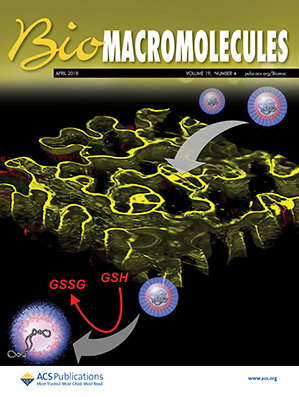复合玻尿酸气体包裹材料促进伤口愈合。
IF 5.4
2区 化学
Q1 BIOCHEMISTRY & MOLECULAR BIOLOGY
引用次数: 0
摘要
组织修复通常在病理状态下受损,这突出了对创新伤口愈合技术的需求。本研究介绍了复合玻尿酸气体包绕材料(GEMs),该材料可输送一氧化碳(CO)促进猪伤口愈合。这些复合材料促进爆发释放,随后在48小时内持续释放一氧化碳。在猪全层伤口模型中,与标准护理敷料(Tegaderm)相比,CO- gems显著加速了伤口愈合。CO-GEMs的伤口愈合率分别为68.6%和56.8%(第14天)、41.0%和25.1%(第28天)、26.9%和11.8%(第42天),有效缩短了14天的愈合时间。组织学分析显示上皮化和新生血管增加,炎症减少。这些发现证明了CO-GEMs作为局部治疗药物在临床相关模型中增强组织修复的潜力,支持进一步测试伤口愈合应用。本文章由计算机程序翻译,如有差异,请以英文原文为准。
Composite Hyaluronic Acid Gas-Entrapping Materials to Promote Wound Healing
Tissue repair is often impaired in pathological states, highlighting the need for innovative wound-healing technologies. This study introduces composite hyaluronic acid gas-entrapping materials (GEMs) delivering carbon monoxide (CO) to promote wound healing in pigs. These composite materials facilitate burst release followed by sustained release of CO over 48 h. In a porcine full-thickness wound model, CO-GEMs significantly accelerated wound closure compared to the standard-of-care dressing (Tegaderm). Wound area closure with CO-GEMs was 68.6% vs 56.8% on day 14, 41.0% vs 25.1% on day 28, and 26.9% vs 11.8% on day 42, effectively reducing healing time by 14 days. Histological analysis revealed increased epithelialization and neovascularization with reduced inflammation. These findings demonstrate the potential of CO-GEMs as a topical therapeutic to enhance tissue repair in clinically relevant models, supporting further testing for wound-healing applications.
- Download: Download high-res image (87KB)
- Download: Download full-size image
求助全文
通过发布文献求助,成功后即可免费获取论文全文。
去求助
来源期刊

Biomacromolecules
化学-高分子科学
CiteScore
10.60
自引率
4.80%
发文量
417
审稿时长
1.6 months
期刊介绍:
Biomacromolecules is a leading forum for the dissemination of cutting-edge research at the interface of polymer science and biology. Submissions to Biomacromolecules should contain strong elements of innovation in terms of macromolecular design, synthesis and characterization, or in the application of polymer materials to biology and medicine.
Topics covered by Biomacromolecules include, but are not exclusively limited to: sustainable polymers, polymers based on natural and renewable resources, degradable polymers, polymer conjugates, polymeric drugs, polymers in biocatalysis, biomacromolecular assembly, biomimetic polymers, polymer-biomineral hybrids, biomimetic-polymer processing, polymer recycling, bioactive polymer surfaces, original polymer design for biomedical applications such as immunotherapy, drug delivery, gene delivery, antimicrobial applications, diagnostic imaging and biosensing, polymers in tissue engineering and regenerative medicine, polymeric scaffolds and hydrogels for cell culture and delivery.
 求助内容:
求助内容: 应助结果提醒方式:
应助结果提醒方式:


